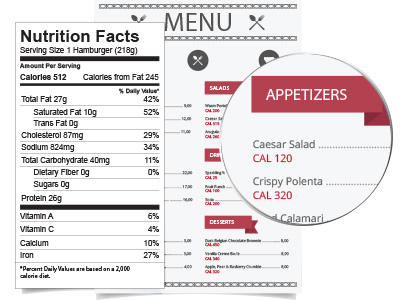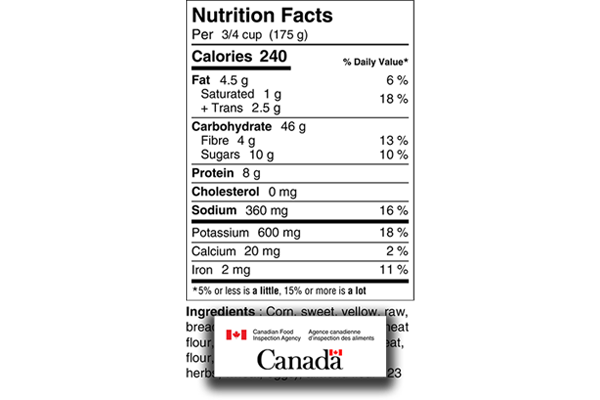Original Publish Date: October 15, 2018

We often talk about nutritional information, cost savings, and organization. But what exactly does nutrition analysis entail? How do you understand nutrition analysis, and is it helping or hurting your business and your consumers? Let’s talk about it.
Through this article, you’ll find out a bit more about how to think about nutritional analysis and how you can get started implementing it and start growing your business.
What is Nutritional Analysis?
At the end of the day, it comes down to the consumer who eats the food you make. The people who buy from you have goals, diets, budgets, and ideas on what is suitable for their consumption. The way you present the nutritional information of your meal is going to determine if the customer is a right fit for you or not. At an individual level, you are helping your customer make the best choice for themselves.
At its core, nutritional analysis is calorie based. 1 calorie is how much energy it would take to heat 1 kilogram of water at sea level at the temperature of 1 Celsius. What you want is to be able to look at a food menu you have created, and figure out how many calories and nutrients have been collectively stored in the dish.
Different foods are worth different numbers of calories per gram, and of course, figuring out what the ingredients in a meal are is the first step. It is a very detail-oriented and time-consuming process.
In addition to calories, a nutrition label also looks at three other main nutrients; fats, carbohydrates, and proteins.
Typically, nutritional analysis is displayed in tabulation form for ease-of-reading. For example; in Canada, the nutritional information displayed includes 13 key elements including energy (measured in calories), macronutrients, and micronutrients.
Macronutrients, required by the body are protein, fat, and carbohydrate and provide energy. Micronutrients are typically vitamins and minerals that the body also needs.
Canadian Nutritional Information is explained in detail on the Canadian Government’s website, where a detailed, interactive nutrition label is provided.

Have a look below for a quick rundown:
- The total amount of fat is displayed, and information is also included as to how much-saturated fat, trans fat, and cholesterol are contained.
- Carbohydrate is listed and the fiber and sugar amounts are also included within the table as these are key factors for health.
- Protein and cholesterol are also listed separately as macronutrients.
- The minerals typically listed in Canadian nutritional information include calcium, iron, and potassium.
Data provided on the nutrition facts table is based on serving size (either in grams or milliliters) and as a percentage of the daily recommended amounts (%DV). The use of %DV is recommended to help the general public choose products that are higher in nutrients, allowing them to select better and healthier food. They are very much an overall calculation and should be taken as a rough estimate, only. Use %DV as a guide and be aware that individual needs are just that — individual.
Food needs and how each body processes nutrients varies, and Health Canada has some good guidelines to follow, but largely, how many calories we burn depends on gender, hormones, lifestyles, age, and body size. Your customers will always have a specific idea of what they need.
Nutritional Analysis and the Law
It’s not absolutely necessary for all food businesses to provide nutritional information but be aware that most consumers find that omitting the information on a menu for example, is problematic and may lead to distrust or people opting not to buy your product.
Here’s a helpful guide to see how the Law affects your business:
- Most prepackaged foods require nutritional information to be displayed in the form of a nutrition facts table.
- You don’t need to carry nutrition information if you are a butcher or grocery selling ingredients such as fresh vegetables and fruit, raw meat and poultry (except when it’s ground), and raw seafood.
- If you produce servings of food that are processed or prepared in-store made from its ingredients, such as salads in a deli or cakes in a bakery; then you don’t need to provide nutritional information by law.
- Individual servings of food meant to be consumed immediately and one-bite confections are also exempted from displaying nutrition facts information.
- You also don’t need to provide nutritional information if you are making food for craft shows, flea markets, fairs, and stalls, road-side stands, etc.
- Restaurants and food service businesses also do not need to provide a nutrition facts table with their products. Though keep in mind, including nutritional analysis is a proven sales boost and can help keep your customers engaged with your products.
- In Canada, if you want to make a claim about your food to further boost sales of your healthy food, such as low in fat or a source of fiber, then check out the guidelines for making those claims in more detail in this Canadian Food Inspection Agency article.
How do Consumers use Nutrition Information?
Don’t be concerned that consumers will turn away from your food given information that it’s not the lightest or healthiest option. Overall, it’s better to cater to a specific lifestyle than to try to please everyone. For the most part, your consumer just wants to know, and it’s not a put-off, so much as it is a helpful addition to helping someone plan their intake.
Consumers use nutrition fact tables for several reasons:
- They want to know what nutrients are in your product, in particular, calories and fat to maintain a healthy weight.
- They want to compare which of your products are better suited for themselves. High-energy foods are often better suited to very active people who might not have a huge appetite.
- People use the information so they can better manage health conditions such as diabetes and high blood pressure.
Before Nutritional Software
Before software being available, nutritional analysis was only available by sending food to a laboratory to ascertain the nutritional analysis of the food. Typically, one single dish sent to a laboratory would cost up to $800 making nutritional analysis by this method, only viable for chain restaurants and larger manufacturers.
Some food must still be sent to a lab. Often, things that are processed, pickled, aged or in some way chemically altered, like wines, kimchi, cheese or hams, need to be tested still, but the majority of the information is easily available for you without that step.
Nutritional Software Analysis
Enter the age of simplicity. With the dawn of software designed to break down and help you build each menu item with ease and peace of mind. Your consumers demand more information, and the software available makes accurate nutritional information a non-issue that doesn’t cost you as much as it used to and takes a fraction of the time to do.
So How Do You Do It?
The Menusano database contains over 250,000 items from USDA, Health Canada, and Public Health England. It covers pretty much anything and everything eaten in the Canadian, American, and UK diet. Fortunately, information has already been collected and accurately curated so that laboratory analysis is no longer needed.
Not only is MenuSano a far more affordable solution, it’s also a more accurate approach to calculating the nutritional facts. Naturally occurring food varies in nutritional composition, so these pre-recorded values give more accurate mean information. For example, a dish prepared in June will probably have different nutritional content than the same dish prepared in December when the nutritional content of the fresh produce will naturally vary.
To use MenuSano, it’s simply a case of inputting your recipe ingredients and amounts. The software will instantly produce an accurate readout of your dish in terms of nutritional analysis in a readable format that consumers are familiar with.

Enter MenuSano
Why not try out nutrition analysis software MenuSano for free? There is no need to add your credit card details and you can see exactly for yourself how easy it is to start using MenuSano, today.



















